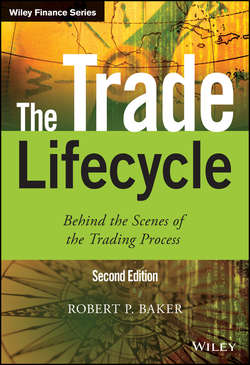Читать книгу The Trade Lifecycle - Baker Robert P. - Страница 12
На сайте Литреса книга снята с продажи.
Part One
Products and the Background to Trading
Chapter 1
Trading
1.2 Factors affecting trade
ОглавлениеIn order to understand trading we will proceed to discuss the motivation behind why trading occurs.
Product appetite
Everybody wants to buy as cheaply as possible, but some people have a greater need for a product and will be willing to pay more for it. Our appetite for a product will determine the price at which we buy. Conversely, our desire to divest ourselves of a product will affect the price at which we are prepared to sell.
Risk appetite
Risk is not necessarily an undesirable concept. Different people and organisations have a different attitude to risk. Some people make money by owning and managing risk. They are prepared to service other people's desire to reduce risk. Many trades arise because some people will pay money to reduce risk and others will accept money for taking on risk.
Exposure
Whenever a trade occurs, both counterparts have each increased and reduced their exposure to something. For example, if Company A buys yen and sells euros to Company B, then A has increased its exposure to yen and decreased its exposure to euros and B has done the opposite (see Table 1.1).
Table 1.1 How a trade affects currency exposure
The EUR-JPY foreign exchange transaction has resulted in the trading of one exposure for another.
Even when something is bought for money, the seller has increased his exposure to the currency of the money he receives. Someone living in New York and trading in dollars does not consider receiving more dollars as a risk because he is not exposed to changes in exchange rates. But in international commerce most market participants do worry about exposure to all currencies including their domestic currency which may attract less deposit interest than an alternative, making holding money in that currency less attractive.
